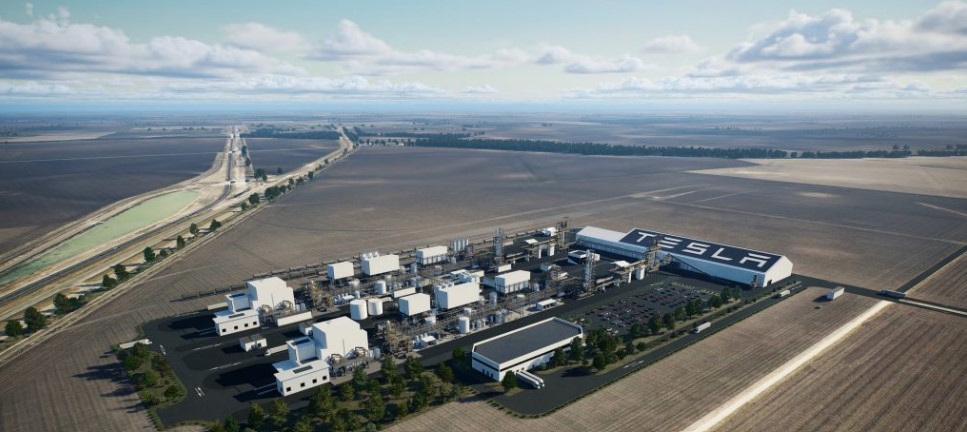Tesla has introduced a Driver Drowsiness Warning to enhance road safety. This Tesla new system uses the cabin-facing camera to monitor drivers for signs of drowsiness, aiming to prevent accidents caused by fatigue. Strong driver monitoring systems are one of the most important features of contemporary cars. These devices help to avoid collisions brought on …
Tesla New Safety Feature: Driver Drowsiness Warning

Tesla has introduced a Driver Drowsiness Warning to enhance road safety. This Tesla new system uses the cabin-facing camera to monitor drivers for signs of drowsiness, aiming to prevent accidents caused by fatigue. Strong driver monitoring systems are one of the most important features of contemporary cars. These devices help to avoid collisions brought on by inattentive and sleepy driving. In particular, sleepy driving has raised many concerns because it can result in deadly crashes.
Alarming Statistics
The National Highway Traffic Safety Administration (NHTSA) has released alarming data regarding intoxicated driving. Six hundred eighty-four persons lost their lives in incidents in 2021 due to drivers nodding off while operating a vehicle. In addition, 91,000 police-reported crashes involving intoxicated drivers occurred in 2017, with an estimated 50,000 injuries and roughly 800 fatalities.
Tesla New Driver Drowsiness Warning
Tesla is actively working to address the issue of drowsy driving by introducing a new safety feature called the Driver Drowsiness Warning. This technology is intended to identify drivers’ fatigue indicators by observing their facial expressions and driving habits.
Activation Conditions
The Driver Drowsiness Warning feature activates when certain conditions are met. It activates when the car is driven for at least 10 minutes at a speed greater than 65 km/h (40 mph) without using Autopilot. These requirements guarantee that the driver is in charge of the car.
Leveraging Cabin-Facing Camera
Tesla keeps an eye on drivers using the camera facing the cabin. This camera watches the driver’s actions and facial expressions to see if they appear sleepy or in danger of dozing off. It is a vital tool in the process of detection.
Evolution of Tesla’s Driver Monitoring
Over time, Tesla’s strategy for driver monitoring has changed. At first, the emphasis was on steering wheel torque detection. To make sure drivers were paying attention and weren’t using handheld devices, Tesla did, however, install a cabin-facing camera in 2021.
The Driver Drowsiness Warning employs a multifaceted approach. It considers driver facial characteristics such as yawning, blinking frequencies, and driving patterns like lane warnings. When signs of drowsiness are detected, the system displays a visual alert on the screen and emits an audible alarm.
Optional Feature
Although a helpful safety feature, the Driver Drowsiness Warning is optional. It can be turned off in the car’s settings, but to promote safe use, it will always turn back on at the beginning of each journey.
This Driver Drowsiness Warning feature represents a significant step for Tesla. While previous monitoring systems primarily focused on Autopilot use, this feature actively monitors drivers even when Autopilot is not engaged. It’s expected to become Tesla’s next active safety feature.
Date of Release and Accessibility
The European owner’s manual for Tesla has information regarding this capability, indicating that it will soon be released. However, as of now, it doesn’t appear to be active. Tesla typically releases new features in specific regions before making them widely available. The European owner’s manual for Tesla has started to include the feature:
“The Driver Drowsiness Warning is designed to notify drivers who appear to be drowsy by monitoring driver facial characteristics as well as driving behavior to determine patterns indicative of drowsiness. When driver drowsiness is detected, an alert is displayed on the touchscreen in the cards area, and an alert is sounded.”
Tesla’s new system counts blinks and yawns, among other measures to measure driver drowsiness. When paired with driving behaviors, this data paints a complete picture of the driver’s health. Monitoring drivers for signs of drowsiness aims to prevent accidents caused by fatigue, ultimately making the roads safer for everyone. As this feature is gradually rolled out, it will contribute to Tesla’s ongoing commitment to driver safety and the advancement of driver-assist technologies.
Subscribe to Our Newsletter
Keep in touch with our news & offers










